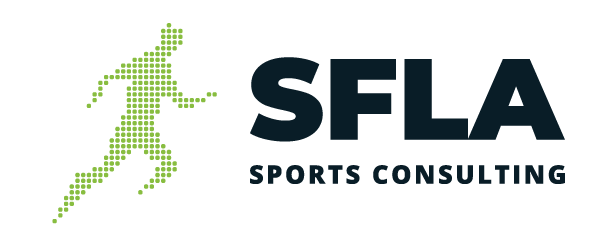By Andreas Themistocleous, APC Sports Consulting Ltd
Athlete development has been the focus point in sport operations for decades, however there has been an evolutionary approach to the entire process that has been shaped by socioeconomic and cultural developments, as well as emerging needs of athletes themselves. The Holistic Model is the latest trend, which in essence is athlete-centered or athlete oriented, meaning that the athletes’ overall well-being and social welfare is being considered, in addition to the sporting development of the athlete. Holistic athlete development describes the process of developing skills, attributes and values, which will assist athletes in achieving success in life, regardless of the level of success they achieve in sports.
Contrary to public belief, athletes are not blessed superheroes or fine-tuned sport machines that compete day in and day out for the millions of dollars in salary, providing entertainment to audiences and a lot of work output for sport media and social media. Athletes are, first and foremost, human beings with needs that extend beyond those related to their chosen sport and they are people that have a professional life span limited to just a few years during which they play professional or collegiate sports.
The Holistic Model of athlete development takes into account their physical abilities, their sport-specific skills in competing and their perception and understanding of the sport and its needs. Additionally, in this model one can observe the input of sport related science, specifically related to rehabilitation and recuperation from sport activity, proper hydration and nutrition, physical preparation and medical care and of course mental readiness (psychological support) to cope with a heavy sport schedule, the need to focus and work hard, while maintaining a sport-life balance that is at least bearable to the athletes and their families. The new addition to the Model, however, is the personal development aspect for athletes, that has been trending in the sports industry for the last few years.
Given that athletes have on average a rather short professional career, the fact that athletes do not have the time or other resources to invest in professional development away from sports, the fact that athletes are proven to be highly financially vulnerable for a series of reasons (including the lack of proper financial literacy skills popular amongst athletes) and the fact that the sport lifestyle has in the past restricted athletes from carrying a normal daily life, a need has surfaced to provide athletes and their development with a complementary sets of skills. These skills can be life skills, educational skills, ethical and normative behavior, cognitive skills and so on.
The sports industry is currently signaling that “We Care”; if the athlete cannot get a professional contract and drops out of sports, we care; if an athlete drops out of professional sports due to illness or injury, we care; if an athlete ends up bankrupt, we care. If an athlete is depressed and feeling hopeless at the end of his/her career, due to lack of professional options, we care. This is the underlying message and the bottom line in the Holistic Model of athlete development. The industry is taking a stand in producing elite athletes, who are also educated, skillful, balanced individuals, who will not vanish when their athletic career is over.
Let’s discuss, however, what exactly these new additions are in the Athlete Development curriculum. For starters, let’s not forget that it involves kids and teenagers, who are deemed potentially capable for sport participation, but without any serious guarantee, based on scientific research or any development model, that these kids will in fact reach the point of professional sport participation. An important factor in the model is the so called Athletic Talent Development Environment (ATDE), which is comprised of all key stakeholders in the development process, including family, friends, the school system, athletes’ peers, as well as everyone that one would expect to be present such as coaches, other athletes, team personnel etc., essentially combining the micro and macro environments of athlete development.
Nowadays, young athletes should be taught basic life skills, should be mentored and empowered, they should be in a simultaneous dual-career path (education and sports) and of course the latest trend is the need for athletes to become financially literate, which is a unique skill that reaches beyond just a supplementary form of development, rather it should be characterized as essential and paramount. These young athletes should be exposed to social responsibility, inclusiveness, diversity, a new set of moral standards that follow societal expectations and needs and through sports they should be guided to becoming better individuals; not necessary acquiring more qualifications, but definitely more quality.
Sport is considered to be one of the biggest vehicles for development and positive change. Whether on a personal, or community level, national and international, sport has the ability to affect change. This Holistic Model of athlete development can instill attitudes and behaviors, can teach qualities such as persistence, perseverance and resilience, which will facilitate learning and excellence on and off the playing field and especially in other areas of life away from sports. This development model is able to teach adherence to teamwork, team values, respect to rules and regulations; it can develop social and leadership skills; physical skills and general athleticism for life long involvement in sport and physical activity; it teaches life skills such as a healthy lifestyle, personal hygiene and awareness of good sleep, rest and recovery practices; it teaches the importance of education as a tool for professional advancement (including the advancement of a pro career) and the extremely valuable life skill of financial literacy that can literally guide young athletes throughout their lives in whatever they choose to do in or out of the sport industry.
In closing, let’s all consider the fact that only 2% of high school student athletes get to play collegiate sports. Let’s imagine what’s like for a college athlete to be in the 94% of all NCAA student-athletes who will not compete professionally. Let’s put ourselves in the position of a former superstar who has gone from hero to zero in less that seven years post retirement. What if it was you, or your own child? What would you have wished your kid had as a fall back plan?? The bottom line is that…..WE CARE.
For a discussion on the holistic model of athlete development and how it can be adopted and implemented by your organization you may get in touch with us via e-mail at [email protected].

